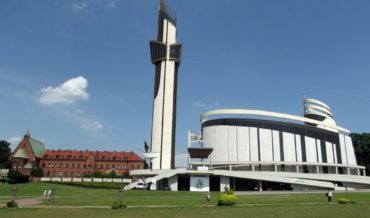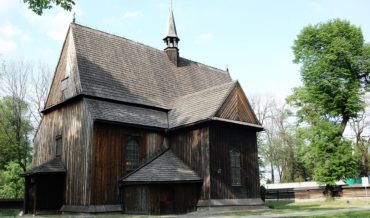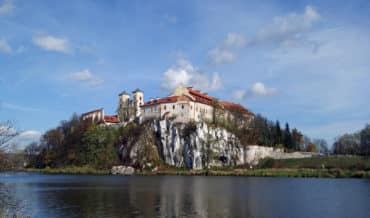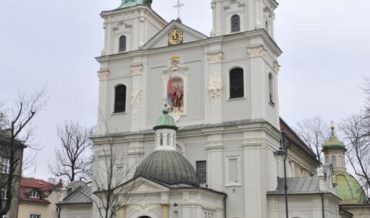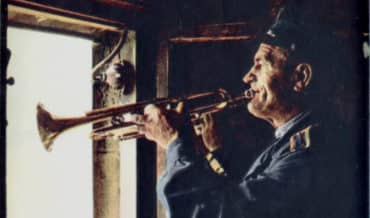Contents
Key Facts
• Noble magnate from Lesser Poland belonging to the prestigious Gryfit family
• Founded monastery in Miechów in 1162 after returning from pilgrimage to the Holy Land
• Established Norbertine monastery in Krakow and donated three villages: Zwierzyniec, Zabierzów, and Bibice
• Major ecclesiastical benefactor supporting numerous monasteries across medieval Poland
• Commemorated today with a street named in his honor in Zwierzyniec district of Krakow
Historical Background and Noble Origins
Jaksa from Miechów was a prominent magnate of Lesser Poland during the 12th century, representing one of the most influential noble families of medieval Poland. He belonged to the Gryfit family, a powerful dynasty that wielded significant political, military, and economic influence in the region during the early Piast period (960-1138 CE). The Gryfit coat of arms, featuring a griffin, symbolized the family's noble status and their extensive landholdings across Lesser Poland's feudal hierarchy.
The early Piast period marked the formation of the Polish state under the first historically confirmed rulers of Poland, centered around the royal seat at Wawel Castle. During this era, the Polish nobility played a crucial role in the Christianization process and the establishment of monastic institutions, which served not only religious purposes but also contributed to the cultural, educational, and economic development of medieval Poland. Jaksa exemplified this tradition of noble patronage that became fundamental to Polish medieval society's structure.
The Holy Land Pilgrimage of 1162
In 1162, driven by the deep religious conviction characteristic of medieval European nobility, Jaksa undertook a pilgrimage to the Holy Land. Such pilgrimages during the 12th century required enormous financial resources, months of dangerous travel through Byzantine and Islamic territories, and demonstrated exceptional devotion to the Christian faith. The journey to Jerusalem was considered one of the most spiritually significant undertakings available to medieval Christians, particularly following the success of the First Crusade (1096-1099).
During his time in the Holy Land, Jaksa encountered the Canons Regular of the Holy Sepulchre, a religious order specifically dedicated to guarding and maintaining the Church of the Holy Sepulchre in Jerusalem. These monks had developed distinctive liturgical practices and spirituality centered around Christ's Passion, death, and resurrection, making them particularly attractive to medieval pilgrims seeking profound spiritual transformation.
Monastic Foundations and Religious Legacy
The Miechów Monastery
Upon returning from his pilgrimage, Jaksa brought monks from the congregation of the Holy Sepulchre and founded the monastery in Miechów in 1162. This foundation represented a pivotal moment in Polish ecclesiastical history, introducing the Canons Regular of the Holy Sepulchre to Central European territories for the first time. The Miechów monastery became the mother house and most significant center of this religious order in Poland, establishing institutional traditions that persisted until the order's suppression in the 18th century.
The Miechów monastery functioned as a multifaceted medieval institution serving:
- Spiritual center: Conducting daily liturgical services and maintaining devotion to the Holy Sepulchre
- Educational hub: Operating a scriptorium for manuscript copying and preservation
- Medical facility: Providing healthcare services to local populations, following the Hospitallers' tradition
- Economic center: Managing extensive agricultural estates and contributing to regional commerce
- Pilgrimage destination: Attracting Polish faithful seeking connection to Holy Land spirituality
The Norbertine Foundation in Krakow
Jaksa's ecclesiastical patronage extended beyond Miechów through his foundation of a Norbertine monastery in Krakow, established with monks arriving from Bohemian territories. The Norbertines, also known as Premonstratensians, were a reformed order of canons regular founded by Saint Norbert of Xanten around 1120, emphasizing both contemplative life and pastoral ministry.
To ensure the economic sustainability and independence of this foundation, Jaksa donated three strategically important villages: Zwierzyniec, Zabierzów, and Bibice. These endowments included:
- Zwierzyniec: A settlement positioned along important trade routes near Krakow that would eventually become one of the city's most significant districts
- Zabierzów: An agricultural village providing consistent income through crop production and livestock
- Bibice: An additional settlement ensuring diversified economic resources for the monastery's operations
These donations followed established patterns of medieval monastic patronage, where founders provided not merely initial capital but sustainable economic foundations through territorial grants and jurisdictional rights.
Broader Ecclesiastical Patronage
Historical sources indicate that Jaksa served as benefactor to numerous other monasteries throughout Poland, contributing to the broader expansion of Polish monasticism during the 12th century. This comprehensive patronage helped establish Poland as a significant center of medieval European Christianity while advancing the region's cultural and intellectual development, laying foundations that would later contribute to the establishment of institutions like the Jagiellonian University.
His extended benefactions likely encompassed:
- Financial support for existing Benedictine and Cistercian communities
- Land grants to various religious institutions across Lesser Poland
- Construction financing for churches and monastic buildings
- Assistance in establishing new religious foundations throughout the region
- Legal protection for monastic communities within his sphere of influence
Connection to Modern Krakow
Jaksa's medieval legacy remains tangible in contemporary Krakow through ongoing commemoration of his contributions. Zwierzyniec district contains a street bearing his name, reflecting the enduring recognition of his historical significance for the city's development.
Zwierzyniec district, originally one of the villages granted to the Norbertines, has evolved into one of Krakow's most distinctive neighborhoods, characterized by:
- Historical significance as former ecclesiastical territory with documented medieval origins
- Exceptional green spaces including parks and gardens reflecting centuries of careful development, complementing the city's famous Planty park system
- Architectural heritage spanning medieval, baroque, and modern periods
- Cultural landmarks including churches connected to the original Norbertine foundation
Historical Significance and Legacy
Jaksa from Miechów exemplifies the medieval Polish noble ideal of combining secular authority with profound religious commitment. His contributions illuminate several crucial aspects of 12th-century Polish society:
Religious Transformation
His pilgrimage to the Holy Land and subsequent monastic foundations demonstrate the authentic Christian devotion that motivated Polish nobility while contributing to the kingdom's spiritual development.
European Integration
By introducing religious orders from both the Holy Land and Bohemia, Jaksa facilitated Poland's integration into broader European Christian networks and intellectual traditions.
Economic Development
His donations and institutional foundations contributed substantially to medieval economic growth through agricultural development, trade facilitation, and employment creation.
Cultural Advancement
The monasteries he established became centers of learning, manuscript preservation, and educational development that advanced Polish intellectual culture.
Urban Development
His village donations directly contributed to Krakow's territorial expansion and eventual emergence as one of Central Europe's major cities, extending far beyond the medieval boundaries of what is now the historic Old Town.
The historical narrative of Jaksa from Miechów demonstrates how individual acts of devotion and strategic generosity created lasting impacts on urban development, regional culture, and national religious identity. His legacy continues influencing Krakow's contemporary landscape while serving as testimony to the profound historical continuity connecting medieval Polish Christianity with modern Central European civilization.
References and Sources
Historical information compiled from medieval Polish chronicles, monastic records from Miechów and Zwierzyniec foundations, and scholarly research on 12th-century Lesser Poland nobility. Specific archival sources include documents from the Miechów monastery archives and Norbertine records housed in Krakow's historical collections.
